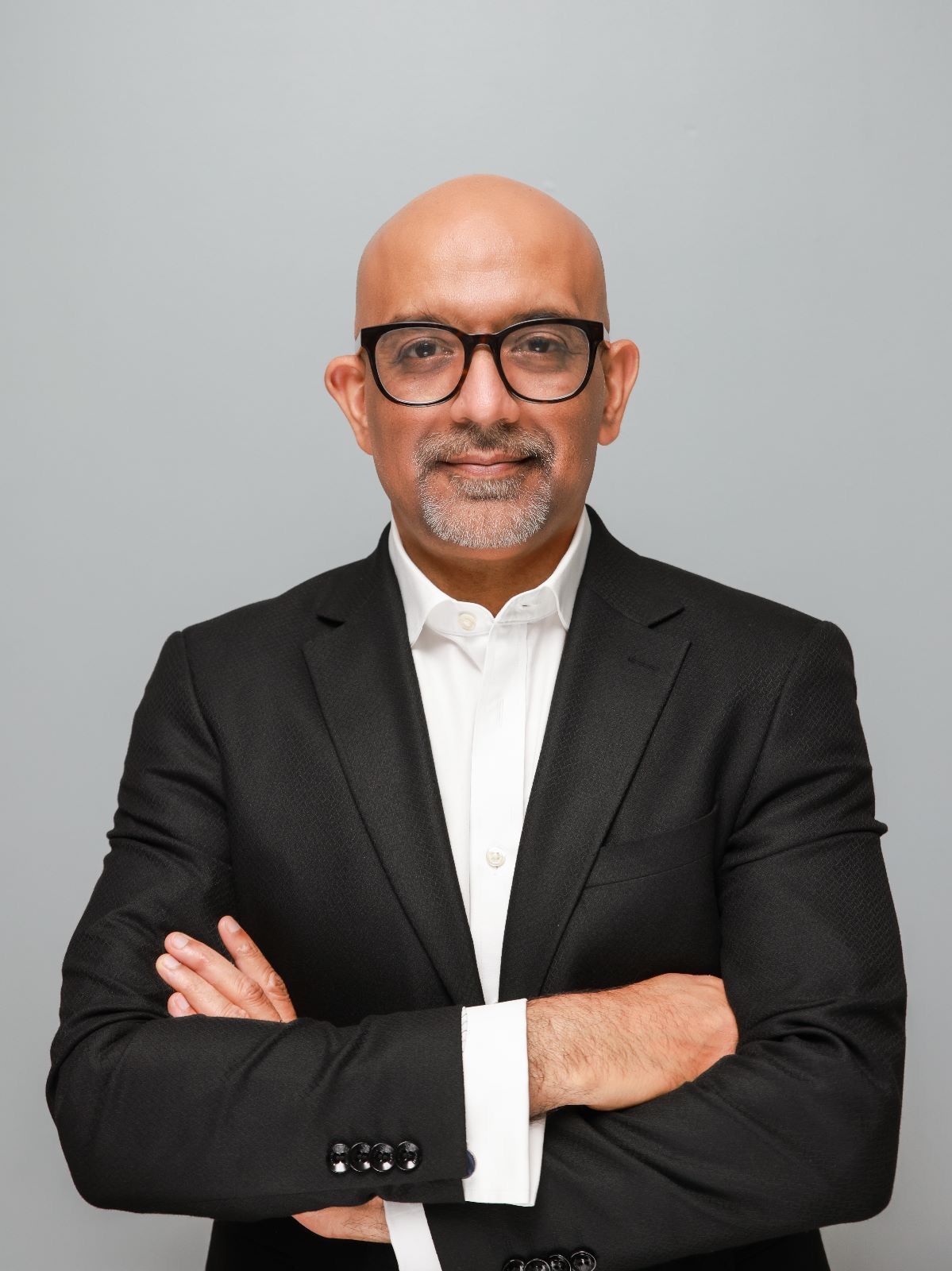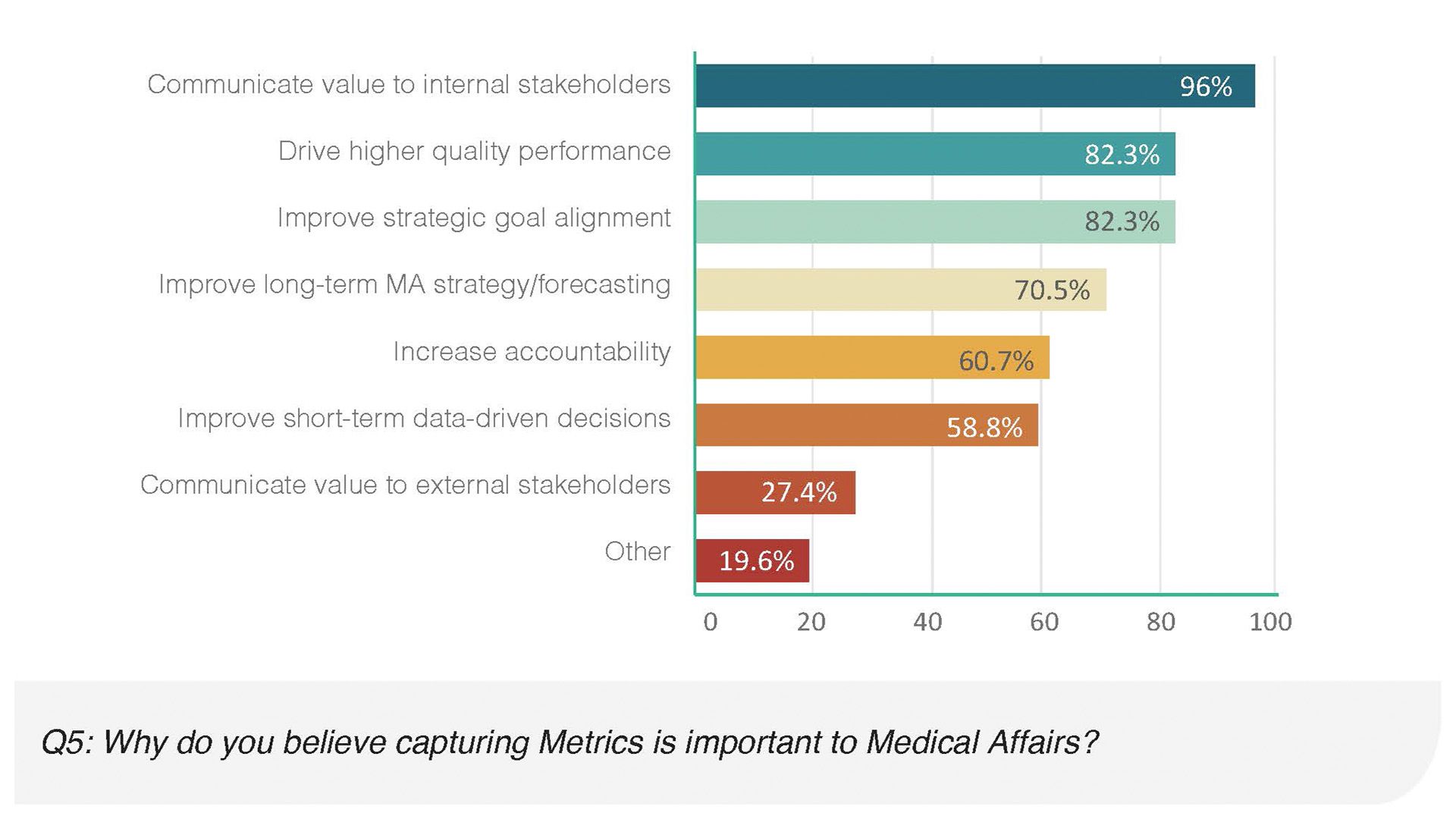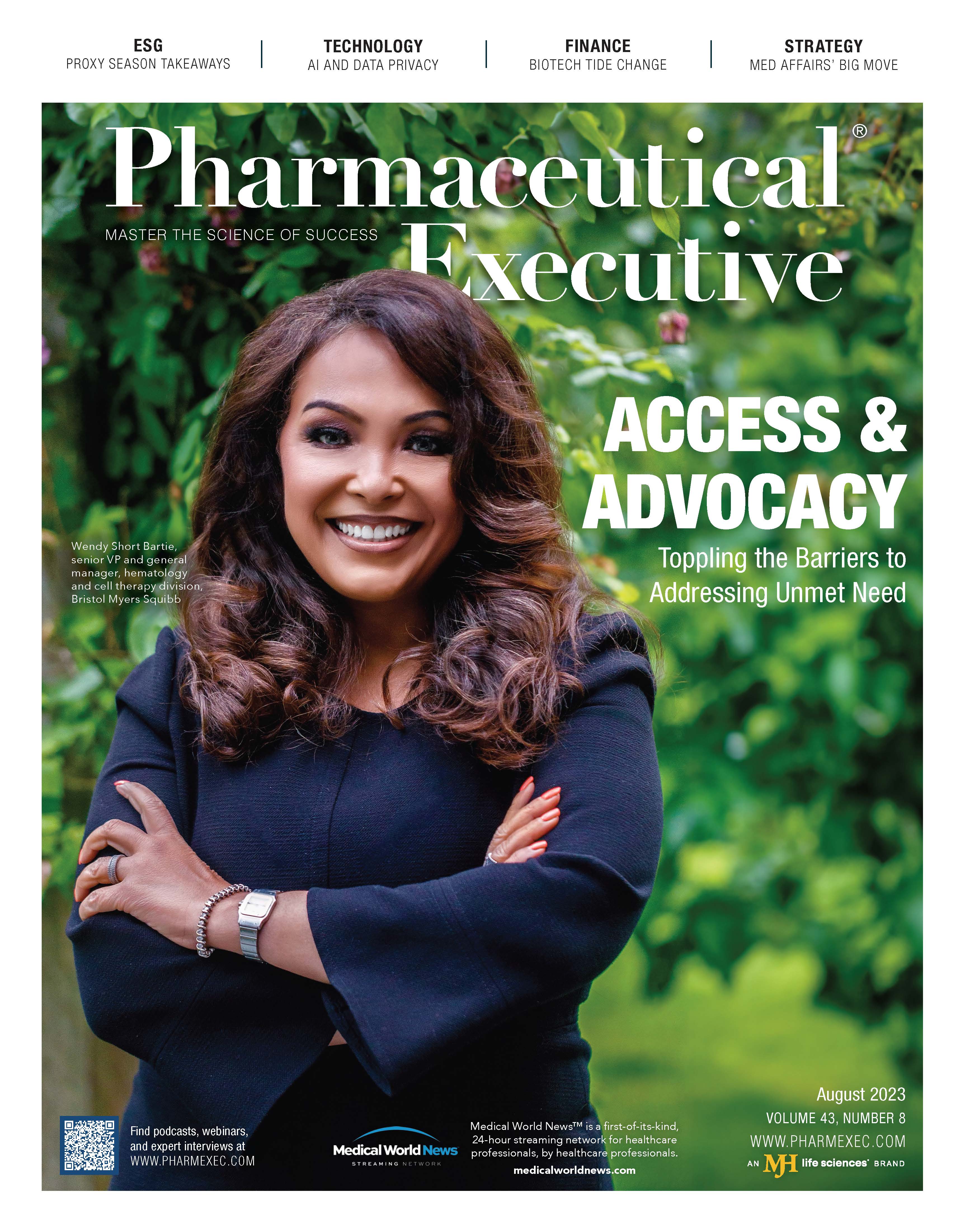The Nucleus of Future Pharma: Medical Affairs is a Central Cog in Enterprise Shift
Now with a seat at the table, growing accountability, and evolving competencies, medical affairs can use its far-reaching influence to change pharma for the better.
Qasim Ahmad, MD, EVP, Chief Medical Officer, IO Biotech

In an odd twist, medical affairs is both an old role and a new role. In part, an evolution and in part, a realization. Always highly regulated, the pharmaceutical industry faces even more rules to follow in all corners of the globe and is increasingly under scrutiny by multiple forms of authority for its many processes and practices. Add in the increasing flow of data, technology, scientific advances, and the pace of communication needed, medical affairs has earned a seat at the executive table. Yet, it also struggles to be understood.
The increasingly complex landscape for medical affairs means things need to change quickly to adapt to the evolving needs of the market.
To get at the heart of medical affairs today, a group of medical affairs experts convened to discuss their experiences.
The connect-the-dots journey of the medical affairs function began years ago when it was part of, and reported into, the clinical development organization or even at times into the commercial organization as a support function; which morphed into an independent medical function to where it is now—recognized as a non-commercial, non-promotional executive entity.
However, “It continues to evolve,” says Qasim Ahmad, MD, EVP, chief medical officer, IO Biotech. He was formerly head of oncology clinical development and medical affairs at Novartis. “Even with a seat at the c-suite table, the true value of the medical affairs function still needs to be realized, as the traditional pharmaceutical sales model and one-size-fits-all service model is getting obsolete and the new health system stakeholders’—patients, payers, decision-makers, and healthcare providers (HCPs)—needs have evolved. They demand modern medical affairs expertise with data-driven services driving informed decision-making at an individual level. From a commercial and financial standpoint, there can be back-and-forth confusion amongst the senior leadership on what is the value that they can get out by investing in medical affairs—a tangible value—like what sales and marketing organizations can show.”
Prior to taking on the US medical head role, Ahmad headed to Japan in 2018 to build and lead the company’s on-the-ground medical affairs efforts, only to discover that medical affairs was not a recognized function in the country (he would work with JPMA and other pharma companies to change that). So, one could view this as a newer role or delayed evolution of industry working practice in Japan.
Matthew Scott, BCMAS, UK and Ireland Medical Affairs Leader at Becton Dickinson (BD)

Matthew Scott, BCMAS, UK and Ireland medical affairs leader at Becton Dickinson (BD), notes that the medical affairs role in BD’s Europe, Middle East, and Africa (EMEA) region is only three years old. And while he too has a seat at the table, it’s taken some time for the role to be understood within the organization. “We are beginning to be seen as a strategic business partner now, rather than a supportive function and very much part of the business strategy,” says Scott. “We are a non-commercial function but aligned with marketing and clinical. Explaining that we are different to clinical is still an ongoing conversation at times, and as a med tech company, it does appear to be a similar journey to the pharma experience.”
Tania Small, MD, Vice President, Global Oncology Medical Affairs, GSK

Tania Small, MD, vice president, global oncology medical affairs at GSK, says her team has made many changes that contribute to the development and delivery of medicines, as well as shape the healthcare and treatment landscape. And that was part and parcel with its shift from a product-centric mindset to a patient-centric mindset in a framework they call “patient-driven science.”
A cursory glance at some of the initiatives that Small has achieved in the oncology organization includes the creation of an early innovation team that uses its knowledge and signal seeking work to accelerate and maximize the value of early assets that can be transformational to patients; broadening the reach of HCPs beyond academic centers into the communities where they practice; developing patient councils in disease areas of study to understand the patient-experience needs; creating teams to work directly with payers and population-based decision-makers; and using AI and machine learning to understand the unmet needs of patients and leverage decision-making.
Barbara Bish, PharmD, BCMAS, CRPh, Director, Global Medical Affairs, Internal Education, Janssen

Barbara Bish, PharmD, BCMAS, CRPh, director, global medical affairs, internal education at Janssen, who comes from field medical and has a background in adult education and instructional design, has seen the shift occur over the last five-plus years. “More [medical science liaisons] are being raised up internally in the organization, and in that regard, being more visible, honing those skill sets and contributing even more on a leadership level.” Those contributions depend on interpersonal skills, collaborations, and teamwork—experiences that may not be in someone’s medical training background.
Small adds: “Medical leaders must now possess both clinical expertise and strong business acumen. As such, there’s a lot of upskilling and training that needs to happen. We need to make sure that our medical leaders understand healthcare policies and the impact they’re making on the future of drug development, are proficient in analyzing and leveraging data into medical planning and execution, and are skilled in precision medicine, patient selection, and companion diagnostics. We must also become exceptional communicators, leveraging technology to expand our reach and amplify our scientific voice to ensure treaters have the right information to make the optimal decision for their patients.”
Global realities
Putting his global experience in perspective—given that medical affairs engages with every function internally from early development to late lifecycle management, and externally with stakeholders from bench to clinic—Ahmad believes that in addition to gross differences in regulatory requirements, legal and compliance issues are also different across regions and countries. He shares that the interpretations of the same medical activity can be different within teams sitting in the same country, and then different interpretations on the rule of external engagement, content creation, data delivery, and dissemination of scientific communication between the US, Europe, and the rest of the world. “It depends on where legal is sitting and varies based on compliance teams’ experience and exposure,” notes Ahmad, who stresses the importance of standardization of medical affairs competencies becoming increasingly critical to minimize risk and maximize effectiveness.
Small agrees that adapting to a changing regulatory environment on a global and local level requires operational fine-tuning, with both a global regulatory team, as well as regulatory teams at the local level.
“The expectations of transformational value are being defined at a patient level,” says Small. “That requires bringing much more patient input and real-world understanding of what we’re doing. Even though countries are moving at different paces, they are generally moving in the same direction, slowly allowing additional endpoints to support approval and reimbursement. For example, this includes the submission of real-world data and outcomes from early access programs and patient-reported outcomes (PROs).”
This means, she adds, that materials created on a global level still need to be operational at the local or country level and aligned to those regulations.
“My global team, in collaboration with the countries, predicts reimbursement and access challenges as best as they can during the design of the trials by understanding the overarching broad-stroke regulations and the local payer requirements, so we can proactively generate the necessary complementary data early, have the right engagements, and create a rich value of scientific narratives by the time of approval/reimbursement,” explains Small. “Putting in the work early strengthens our ability to have the optimal label and reimbursement, and ultimately gives patients the best access to new medicines.”
Bish concurs: “It is the change of the field medical function into a field medical excellence central hub, for information that is then disseminated to a local audience for then further dissemination within geographic regions.”
In addition, the global approach requires more personalized content delivery and knowledge of different health systems, the rules of access for big data, personalized data, electronic medical record (EMR) access, etc. For these reasons, Small points out, training, upskilling, and understanding must be aligned in real time. “The pace in which we move is a lot faster now, so it’s not enough that we keep up; we want to lead because there is an opportunity here to make medicines better for patients,” she says.
Figure 1: The 2023 Medical Metrics Benchmarking Report from MAPS (https://medicalaffairs.org/medical-affairs-metrics-benchmarking/) included responses from 51 pharma, biotech, medical, and diagnostic device organizations regarding their perspectives on the metrics, activities, and outcomes of this industry sector.
Source: Medical Affairs Professional Society (MAPS)

Board certification, upskilling, and accreditation
Based on the diverse set of needed skills mentioned, the equally diverse mix of medical affairs backgrounds, the increasingly complex nature of the medical affairs function, and diverse sources of knowledge acquisition, the function itself is ripe for level-setting and standardization through accreditation and board certification.
William Soliman, CEO and Founder, Accreditation Council for Medical Affairs (ACMA)

Of the group of experts interviewed, experience levels include laboratory, PhDs, MDs, PharmDs, paramedics, training, and clinical research. These are pretty representative of what a medical affairs professional looks like, according to William Soliman, CEO and founder of the Accreditation Council for Medical Affairs (ACMA). “In reality, we are not trained to work,per se, in medical affairs and we have conducted studies on the backgrounds and presented this data at conferences,” he says.
The ACMA was established in 2015 and is the first accrediting body for the pharmaceutical industry, offering a number of certifications for pharma professionals. The most recognized is the Board Certified Medical Affairs Specialist (BCMASTM). Those interviewed discussed the value of this first-ever board certification for medical affairs and medical science liaison professionals, and what it adds not only for the professional but the company and industry as well.
In Soliman’s view, this type of accreditation is no different than those for other professions.
“It’s about setting a minimum standard and making sure that everyone is singing from the same hymn sheet,” he says. “For medical affairs, we may have different divisions, needs, and goals, but there is a core set of competencies that are the same—that transcend across the industry. While we are establishing a standard, we are establishing accountability as well.”
The BCMAS modules can be tailored to an organization’s needs as well as regional requirements. Small says at GSK the company is conducting a deep dive on strengths, identifying where upskilling is needed, and reviewing current coaching models to establish top medical business leaders.
For Scott, when setting up a new role and department from scratch over two-and-a-half years ago, the BCMAS course provided him with the framework guidance needed to develop the function. He also appreciated the European rules and regulations included in his modules.
“The BCMAS course definitely helped my credibility and increased my knowledge base, supplementing my in-house training from BD,” says Scott.
He adds that he’s noticed an increase in the amount of questions and requests for advisement coming from the commercial function. “I’m very much seen as a trusted business partner within the organization,” he says. “From the outset, I had to create a dynamic integrated medical plan, which had to be aligned with the country’s marketing or business plan. The courses for certification supplemented my existing commercial acumen and understanding and application of medical affairs.”
Bish says she was previously board certified in psychiatric pharmacy practice. “That was a similar certification process that delineated my expertise in that specialty area,” she notes. “The BCMAS allowed me to delineate myself as an expert in the medical affairs arena.”
Compliance
According to Soliman, there is a greater awareness and interest today in the medical affairs role among FDA, the European Medicines Agency, and the US Congress. The latter invited the ACMA to a briefing to discuss the importance of setting standards in the pharmaceutical industry.
The ACMA is helping various stakeholders understand how medical affairs differs from the pharma sales function in practice. As Ahmad mentions, even internal confusion on how medical affairs is measured can result in a leap of logic concerning how these roles are defined and delineated.
Soliman maintains that to minimize this confusion, it’s important to ensure the integrity of the role and provide external guardrails between commercial and medical; certification from an independent accreditation organization is extremely helpful.
“If we are going to move the needle in the new directions of which medical affairs is moving, we need the right framework to protect the integrity of medical as well as enhance pharma’s reputation,” he says.
Compliance, which is another pharma function that has undergone transformation and elevation within the industry, also sits under the medical affairs umbrella at some companies. “Companies are aware that medical affairs’ increasing activities and deliverables are coming under more scrutiny,” says Ahmad. “Medical gets more face time with external stakeholders because of the scientific value of the engagement, particularly with key opinion leaders. This may carry a potential risk in some organizations, which might like to tilt this advantage of access to experts in a negative way.”
Bish believes that the BCMAS role is well-placed for compliance. “Anyone that has the BCMAS board certification will at least have demonstrated a standard, including compliance,” she says. Bish adds that some organizations can have more conservative legal departments, which will limit what the medical affairs department can do. “If we have that certification, and ensure compliance, we can be trusted and have more positive effects on patient outcomes,” she notes.
Small adds, “We work hand in hand with our compliance and legal officers as business partners, so we can drive progress and not stifle innovation.” She emphasizes that training is key for staff taking on new responsibilities. “As medical business leaders, with access to big data and our increasing impact on the healthcare system as a whole, we assume more risks, she says. “We need to be trained to assume that risk in a deliberate way.”
Reputation, integrity, and a whole-company approach
Soliman believes that pharma is behind the eight-ball in what other industries are doing to address their reputation. “We don’t want to wait for, say, the next opioid crisis. Now is the time to say, at least within medical affairs, we are doing something to go above and beyond,” he says. “We are doing something to demonstrate that we are different than commercial, and we’re going to set a minimum standard for our professionals in the industry.”
“This is not just about medical affairs,” adds Ahmad. “This impacts the whole industry, and whichever company we all work for, there is a dire need for a shift in how the organizations operate. Most pharma companies, in general, have been sales-oriented companies with transactional customer relations. And though we have a clear realization that the traditional sales model does not work anymore or needs evolution, I think there is still a gap between that realization.”
To bridge that gap, Ahmad points to the need for an enterprise mindset—and not just for medical affairs. “We as an industry need to move from transactional to strategic relationships and collaboration,” he says.
The future of pharma, Ahmad contends, is to be built on three main pillars: clinical development, commercial, and medical affairs.
“As my medical team and organization builds capabilities around value-based discussions, not just with healthcare professionals, not just the patient advocacy groups, but with the broader health system decision-makers, this is where the shift is coming,” he says. “We would not be able to do this with any other function within the organization, given all the regulations, scrutiny, and guidelines around us.”
Small concludes: “This is why the medical affairs role is so important. We are going to be the nucleus or the essential function that drives change. We are the ones with our fingers on the pulse of all our stakeholders. We are the ones who can elevate the patient’s voice and embed the patient-centered model in everything we do. We are going to be the ones that really impact the healthcare industry and—in close partnership with our colleagues—get ahead of diseases.”
Lisa Henderson is the group editorial director for Pharmaceutical Executive®, Applied Clinical Trials®, Pharmaceutical Commerce®, and Medical Device and Technology®.

The Misinformation Maze: Navigating Public Health in the Digital Age
March 11th 2025Jennifer Butler, chief commercial officer of Pleio, discusses misinformation's threat to public health, where patients are turning for trustworthy health information, the industry's pivot to peer-to-patient strategies to educate patients, and more.
Applying Porter’s Five Forces to Portfolio Management in Pharmaceutical R&D: A Strategic Roadmap
March 17th 2025The increasing costs and complexity of R&D in the pharmaceutical industry have necessitated the adoption of strategic portfolio management to optimize resource allocation and enhance competitive advantage.
Navigating Distrust: Pharma in the Age of Social Media
February 18th 2025Ian Baer, Founder and CEO of Sooth, discusses how the growing distrust in social media will impact industry marketing strategies and the relationships between pharmaceutical companies and the patients they aim to serve. He also explains dark social, how to combat misinformation, closing the trust gap, and more.